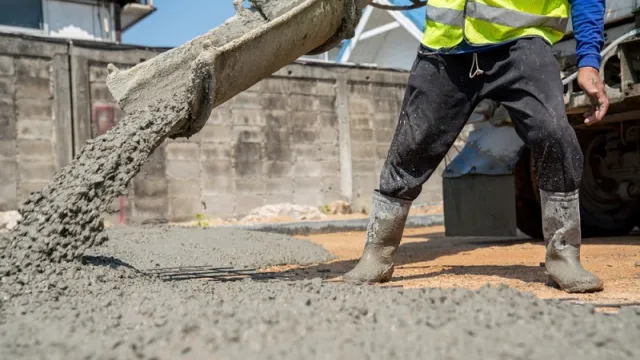Dip in Q1 cement use mirrors fall in housing plan approvals

Dip in Q1 cement use mirrors fall in housing plan approvals
Kenya's industrial sector activity remained subdued in the three months to March 2024 with a notable drop in the usage of key inputs such as cement and bitumen. In the quarter, however, Kenya's economy remained resilient, growing by 5 percent compared to 5.5 percent during a similar period last year, supported by strong growth of agriculture and services.
CBK's quarterly economic review for Q1 shows that cement consumption in Kenya decreased by 12.7 percent during a period when the value of building plans approved by the Nairobi City county contracted by 31.2 percent.
Additionally, activity in road construction decelerated with CBK noting that the import of bitumen, a key ingredient used in road surfacing, roofing, and certain types of painting, went down by 32.4 percent.
"Growth of the manufacturing sector decelerated to 1.0 percent from 1.7 percent in a similar quarter of 2023, reflecting high production costs.
Another notable deceleration in GDP growth was reported in the electricity and water supply sector which eased to 2.4 percent from 3.8 percent in a similar quarter of 2023.
In the quarter, heavy rains in the country helped push up total electricity generation by 1.1 percent, reflecting a significant increase in the generation of hydroelectricity by 90.4 percent.
"The increase in hydroelectricity generation offset the declines recorded in the generation of geothermal electricity (-7.3 percent), wind electricity (-10.1 percent), and solar electricity (-9.1 percent)," explained CBK.
On the flip side, agriculture continued to power Kenya's GDP as favourable weather saw the industry post 6.1 percent growth compared to 6.4 percent reported in a similar quarter last year.
CBK said the agricultural sector reported increased production of tea (42.9 percent), milk deliveries (30.1 percent), sugarcane (6.1 percent), and export of horticultural crops (30.6 percent). However, coffee exports decreased in the three months by 13.8 percent.
Read also: Agriculture, tourism power Kenya’s economic growth in 2023
Another strong performer of the economy was the services sector, which expanded by 6.2 percent, a slower pace than the 6.8 percent growth it reported during the comparable quarter in 2023. Overall, CBK estimates that the services sector accounted for 3.5 percentage points to real GDP growth in Q1.
Further growth in deposits and more loans to the private sector saw the country's financial and insurance services industry expand by 7.0 percent, a higher margin than the 5.9 percent growth recorded during a similar quarter in 2023.
"The strong growth was driven by enhanced financial intermediation, as reflected in increased deposits (20.9 percent), and credit to private sector (10.7 percent). However, the cost of credit increased following the raising of the Central Bank Rate (CBR)."
The accommodation and food services sector posted the biggest growth during the three months at 28 percent, but this was no match to the 47.1 percent expansion the industry reported in a similar quarter of 2023 as the segment pulled out of the Covid-19 fallout.
CBK said the accommodation and food services business was largely powered by a rise in tourist arrivals through the two major airports, Jomo Kenyatta International Airport (JKIA) in Nairobi and Moi International Airport in Mombasa, which increased by 10.4 percent.
Growth in the transport and storage sector decreased, posting 3.8 percent expansion compared to 6.6 percent growth realised in a similar quarter of 2023.
During the quarter, passenger traffic through the Standard Gauge Railway (SGR) declined by 11.0 percent following a 50 percent increase in fares that was implemented in January 2024. Cargo transported through SGR also declined by 17.4 percent, while road transport continued to be hampered by high fuel prices.



